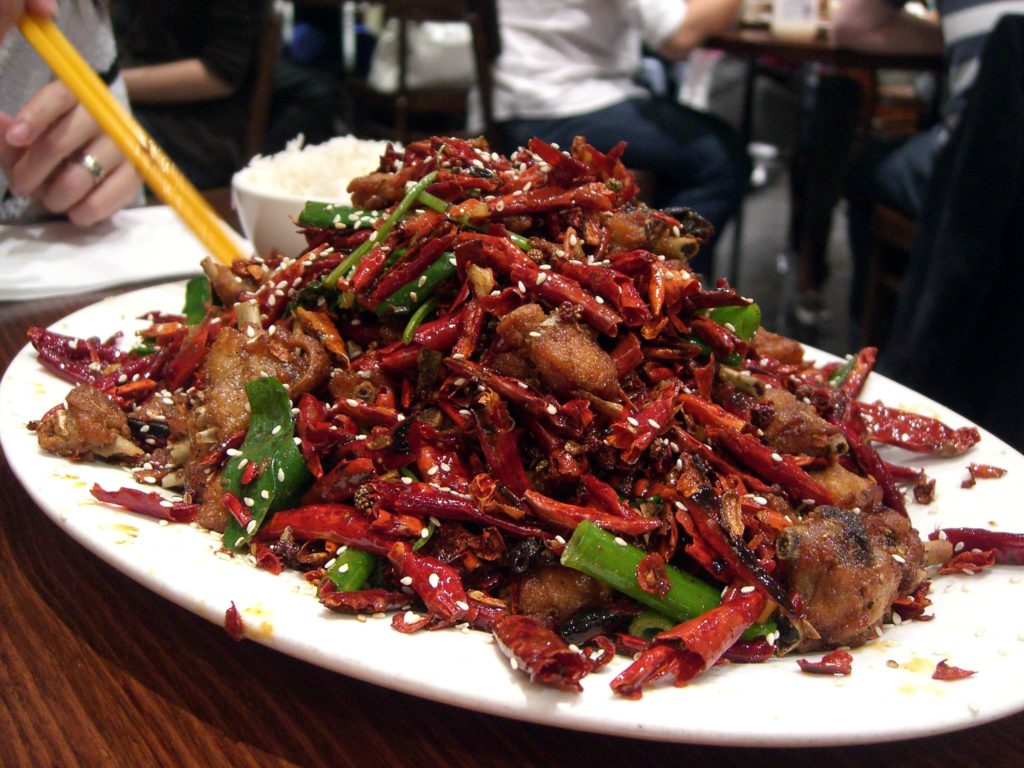
Everyone has endured the pure torture — or, to some, heaven — of biting into a spicy food and being left helpless as the fire in your mouth becomes a conflagration. This intense heat can be blamed on capsaicin.
Capsaicin is a chemical found in the white flesh of chili peppers. Although it is at a safe level in chili peppers, it can be very dangerous. When dealing with capsaicin in its pure form, goggles, respirators, and HAZMAT suits are necessary to keep you from literally burning your face off.

In 1912, Wilbur Scoville, a chemist, developed the Scoville Heat Index, a scale to measure the spiciness of peppers. Heat is measured in multiples of 100 units, based on how much sugar-water it takes to dilute the pepper to the point where tasters can’t notice its heat. Pure capsaicin can be three times hotter than pepper spray.
After taking a bite into a spicy food, the capsaicin in it binds to your TRPV1 receptors. TRPV1 receptors are found on the surface of your taste buds and many other places on your body. After the capsaicin binds to the receptor, the receptor opens, allowing ions to run through it. The sensation from this change is transmitted through your trigeminal nerve — a nerve that branches out from your brain to your mouth, nose, and eyes — to your brain, which responds by releasing a sensation of warmth in your mouth.
Capsaicin isn’t the only chemical that causes this reaction. Piperine, a compound in black pepper, and allyl isothiocyanate, a compound in mustard and radishes, do the same thing.
The reason why your mouth feels warmth is that TRPV1 receptors are not meant to detect capsaicin. Their main purpose is to prevent you from consuming hot foods. However, TRPV1 receptors also respond to certain chemical influences, including capsaicin. Because of your TRPV1 receptors’ intended purpose, your central nervous system is tricked into believing that you ate a hot food.

The pain from eating spicy foods is an illusory side-effect from your confused receptors. Your mouth feels hot because your receptors are usually triggered by something at temperatures higher than 107.6 degrees Fahrenheit. Or whatever Homer’s eating.
Once your brain notices that you are under assault, it sends out the fire squad to remove the hot substance.
Your brain dramatically overreacts. Your circulation is increased to boost your metabolism. Cooling sweat and endorphins — your body’s natural pain killers — are released. Fibers in your nose are activated, causing inflammation, and your eyes are stimulated, causing them to tear up. Your body wants that hot thing gone!
Unbeknownst to your brain, it is all for nothing. A common myth is that if you eat chilies on a regular basis, your tongue’s tolerance for them will increase. This is partially true. Over a short period of time, the perceived heat from the same food will decrease, but only because your TRPV1 receptors are hiding to protect themselves from damage. Once the coast is clear, they will come back out and your tolerance will return to normal.
The only reason why there would be a difference in heat sensitivity between chili lovers and haters is their number of fungiform papillae and taste buds. Although your TRPV1 receptors hide to prevent damage, eating spicy foods will not damage your tongue unless you go to extremes. If your tongue’s sensitivity seems to have permanently decreased, it is probably from damage. It is usually impossible to regain your sensitivity, so if this happens, get it checked out! But, if you become mentally stronger, you’re probably fine.
I hope you chili lovers enjoy the dark side safely. Since this reaction is meant to help you, it is hard to stop. Drinking water won’t unstick the capsaicin from your receptors, but something with alcohol or fat — like milk — will. So, if your mouth is burning from eating something spicy, drink milk to save the day.

